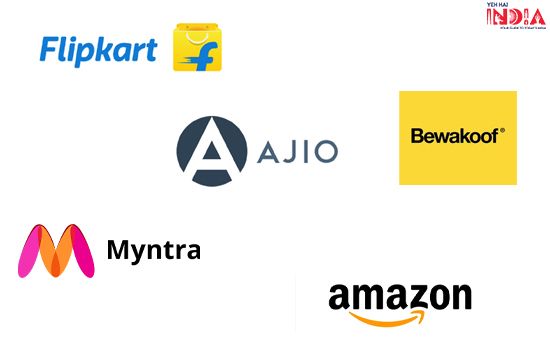Almost anything can be bought online, including groceries, appliances, and clothing, and many of us already do so. In fact, 95% of Americans claim to purchase online at least once every year1. The frequency of fraud and/or identity theft incidents is rising as we move further in this direction. 15.4 million Americans were victimized by online thieves in 2016, a 16 percent increase from 2015. They stole $16 billion in all, or more than $1,000 from each victim.
Follow these recommendations the next time you shop online to avoid being a victim of theft or fraud.
1. Shop from secure websites only
When you visit a website, the URL should begin with “https” instead of “http.” A secure website is encrypted, allowing you to complete a purchase and enter your personal and credit card information without being hacked.
2. Create a unique username and password for each account you have
Most online retailers allow you to create an account on their website. This way your personal information and credit card number is stored in their system. Many users create an account to see their order status, order history and make reordering items easier. However, for each account you have, be sure to use a unique username and password. Think about this: if you have five accounts for five different retailers, but you use the same username/password for each, as soon as a hacker cracks your login, they now have access to every account in which you use that login for.
3. Never provide your social security number
Plain and simple: online retailers do not need your social security number to complete a transaction.
4. Never click on links or images within a promotional email
This one is a bit trickier. Let’s say you receive an email from your favorite online retailer and they’re offering 50% off the entire website. However, before you click on that image or link in the email, it’s best to go directly to your web browser and type in their website URL. This way you guarantee you are visiting their secure site.
Read Also: What Card Should I Use For Online Shopping?
Many hackers use phishing scams where they create a fake email and website to attract consumers to and steal their information. Many times, they can replicate a retailer’s website so well, the consumer has no idea until it’s too late.
5. Never use free Wi-Fi at public places when online shopping
Hackers love free Wi-Fi because it’s easy for them to access your device and steal personal information. When using public Wi-Fi, your data is usually not encrypted. In addition, hackers can create fake Wi-Fi networks, and as soon as you connect to their password-free network, they have complete access to your device.
6. If a deal seems too good to be true, it likely is
If you see an item on a website, such as Amazon, and the price has dropped by $200, it’s likely a scam. Or, if you see an offer that says, “Like our Facebook page and we’ll give you a free iPhone®!” it’s almost always a con.
7. Monitor your credit card activity and statements
Be proactive. Check your credit card activity every day and review your statements in-depth. Request to receive alerts for total purchases over a certain amount, such as $500, within a billing period. This way, if a hacker uses your card for multiple smaller purchases instead of one large purchase, you’ll be notified.
One U.S. citizen falls victim to identity theft every three seconds. Although you may take all the appropriate steps to combat fraud, you can still fall victim. Contact your independent insurance agent today to review your policy and learn how you can shield your family, finances and future with Integrity’s identity theft protection coverage.
8. Update your software
One of the simplest ways to protect your information is to update your software, yet many people put it off. Software updates are frequently published to help with security improvements and combat newly discovered assaults. While having to wait while your computer (or smartphone) updates and restarts may seem annoying, the security advantages are definitely worth it. Do it the next time a notification urges you to upgrade your software.
You don’t want unpleasant surprises like having your identity stolen or having your bank account empty. Utilize identity theft prevention to safeguard yourself.
It’s advisable to stick with credit cards or online payment systems like Paypal while shopping online. Debit cards put you at a higher risk of identity theft because they’re connected to your bank account. If a card number is compromised, credit cards provide additional security and reduce liability. It makes sense to lay it on plastic at this particular time.
Pete Canavan, a cybersecurity specialist, concurs. He suggests sticking with payment methods and credit cards to ensure prompt refunds in the event that something does go wrong.
“Credit card companies usually reverse the charge and launch an investigation as soon as a fraudulent site or transaction is discovered,” he explains. “If there is a problem when you use your debit card, your bank might not refund the money to you until after an investigation is finished, which could take weeks or months.”
One benefit of shopping online is that you can do it from any location and on any device. Make sure security software is installed on every device you use to make purchases. Always lock the screen of your computer or log out when you leave it, and always use a passcode to access your tablet or smartphone. Do not allow your computer or device to remember your usernames, passwords, or credit card details after entering a shopping or banking website. Be sure to properly check out of the website before leaving.
Watch out for email scammers that send out malware and viruses under the pretext of a gift or a unique promotion. Never open emails from strangers or websites you haven’t been to. False mails purporting to be from your bank or another financial institution stating that there is an alert or issue with your account are another method the bad guys try to get you. Never respond to a suspicious email like this by entering your account information; instead, always call the bank directly to confirm any potential issues.


